Nerja in November - Day 3 Cuevas and Maro
Without worrying about luggage, tickets to Cuevas or imminent departure I sleep soundly and we get up quite early at 7 o'clock to head for the Cuevas. First thing in the morning there are no direct buses to the Cuevas so we get the 8.25 to Maro. The ticket costs €1.18 per person one way and takes about ten minutes. The bus stops at the roundabout before Nerja without actually going into the village. From there it's just a short walk into the village and after the first restaurant on your left, up Calle Virgen de los Milagros you can see the swirls of white concrete leading up to a most convenient walkway above the main road and motorway to the Cuevas.
It also takes you over the botanical garden which is unfortunately closed on Mondays. We managed to get free tickets to the Cuevas online. The timing of these free tickets seems to vary quite a bit but at the time of our visit - November 2019 free tickets are available from Monday to Friday for the 9.30 entry slot. According to the website there are 40 available each day online and another 20 for the first in the queue directly at the ticket office on the day. Also according to the website the online free tickets are available 48 hours in advance but in our experience over these few days they become available very early in the morning of the day before. We are at the entrance area before 9 and use the extra time to leave our backpack in the luggage lockers, visit the toilets, very new and very smart, and look at the start of the path we want to take after visiting the caves.
A queue starts to form outside the entrance at about quarter past nine and after just a few minutes they start letting people in to take a photograph of them, for security we imagine??, and giving out audioguides, which we decide against. We then sit to wait for the whole group and set off at 9.31. Our guide escorts us through the various rooms. The pace is quite slow so there's plenty of time to look around and take photos although as usual we are amongst the first in and the last out. The caves were discovered on 12th January 1959 by five friends, who decided to go down a 'hole' - a narrow sinkhole known as "La Mina" near the cemetery because they had seen some bats coming out. There are five kilometres of caves but only the Show Galleries are open to the public. Access is easy but there are a lot of steps and many areas and places where you put your feet are dimly lit so it's wise to go slowly and first look up and about you and then down at where you are stepping when moving around. The caves deserve the adjective spectacular and the halls really are enormous.
After the entrance hall the first is the Hall of Nativity, this then leads in to the Hall of Elephant tusks which is already quite spectacular. Some steps lead down to the Hall of the Waterfall because the rock formations resemble stone waterfalls. This area is also known as the ballet hall because it's where shows take place. The next area is the Hall of Phantoms due to ghostly like shapes which are not very apparent due to the very soft lighting. The largest and most spectacular area is the next - the Hall of Cataclysms.
At the bottom of the steps before you go up to the hall of Cataclysms there's the so-called organ because of its resemblance to the real thing. The massive column in the centre of this hall is the most important feature of the visit, and the fallen blocks due to the ancient earthquake are particularly evident behind and below it.
After the entrance hall the first is the Hall of Nativity, this then leads in to the Hall of Elephant tusks which is already quite spectacular. Some steps lead down to the Hall of the Waterfall because the rock formations resemble stone waterfalls. This area is also known as the ballet hall because it's where shows take place. The next area is the Hall of Phantoms due to ghostly like shapes which are not very apparent due to the very soft lighting. The largest and most spectacular area is the next - the Hall of Cataclysms.
At the bottom of the steps before you go up to the hall of Cataclysms there's the so-called organ because of its resemblance to the real thing. The massive column in the centre of this hall is the most important feature of the visit, and the fallen blocks due to the ancient earthquake are particularly evident behind and below it.
It takes us nearly an hour by the time we come out and we are surprised to find the photo taken of us at the beginning is now un-ecologically on sale at the astronomical amount of 7€. We decline. It's nice to be out in the sun again after the gloom of the caves and we decide to do the suggested walk in the area of the park which is directly over the caves. The Sendero Cueva de Nerja - Almijara is signposted as being an approximately 1700m loop and it takes us up the hill behind the entrance buildings to a fine Mirador with views of the coast in both directions, including Maro
and the mountains behind. There are interesting placards about the flora and fauna of the area and also about the various galleries of the caves below which perhaps it would have been useful to read before going in. Going slowly and stopping for photos it takes us about 45 minutes to get back to the Ermita de San Isidoro which used to be part of the cemetery of Maro and is now within the Cuevas complex.
The Cuevas complex is very pleasant and well planned. There's a large restaurant and café with beautiful views over the coast, clean and modern toilets, lockers, a shady picnic area with tables and benches. All very nice. On this November day however shade is not our objective so we find a sunny spot with a view of the sea for our early but frugal picnic of bread, cheese and San Miguel beer.
and the mountains behind. There are interesting placards about the flora and fauna of the area and also about the various galleries of the caves below which perhaps it would have been useful to read before going in. Going slowly and stopping for photos it takes us about 45 minutes to get back to the Ermita de San Isidoro which used to be part of the cemetery of Maro and is now within the Cuevas complex.
The Cuevas complex is very pleasant and well planned. There's a large restaurant and café with beautiful views over the coast, clean and modern toilets, lockers, a shady picnic area with tables and benches. All very nice. On this November day however shade is not our objective so we find a sunny spot with a view of the sea for our early but frugal picnic of bread, cheese and San Miguel beer.
Afterwards we stroll back across the footbridge to Maro as far as church Iglesia Señora de los Milagros where there's a convenient bar with a view of the coast for a café con leche. Maro is a very small but very quiet and pretty village, especially the 'pavements' detached from the road.
There's a fresh breeze so we decide to walk back to Nerja, also because Mercadona is on the way and we have a few things to get and because it's an opportunity to see the countryside. What with the coffee, the fresh air and the views it's a pleasant enough walk, even though it follows the main road there's a pavement and there isn't much traffic and we get a good view of the interesting aqueduct built in the 18th century to take water to the nearby sugar cane factory.
There's a fresh breeze so we decide to walk back to Nerja, also because Mercadona is on the way and we have a few things to get and because it's an opportunity to see the countryside. What with the coffee, the fresh air and the views it's a pleasant enough walk, even though it follows the main road there's a pavement and there isn't much traffic and we get a good view of the interesting aqueduct built in the 18th century to take water to the nearby sugar cane factory.
Mercadona is well-stocked once again, particularly in fish, and we come away with 1.3kg of sardines and squids for a total of just over five euros. We pass by the apartment to leave the shopping and then go straight to Nerja museum which, obviously, we visit free. The ticket to the caves also gives you 48 hours for a free visit to the museum, although the museum should be free anyway on Mondays for EU citizens. There are four floors. The first and second deal with the history of Nerja and of the two the upper is more interesting due to the video on the production of cane sugar about which I knew next to nothing, and another about the use of Esparto grass. There's also a wall about the discovery of the caves. From there the lift takes you down to the first basement floor which is entirely dedicated to the caves with an interesting video and explanations about the various formations in the caves as well as the insects and the peoples probably living there through the various ages. There are also artifacts found in the caves including the small skeleton of 'Pepita'.
The second basement floor houses temporary exhibitions and we just take a quick peek as the art in this one is not particularly to our taste. Altogether we spend over an hour in the museum which I would perhaps have called an Interpretation Centre as is often the case in Spain because there's a lot of fascinating information but not really, except for the caves section, that many artifacts.
Back outside we stroll along Calle Carabeo to take a look at some of Nerja's other beaches. Going down to Playa Carabeo while exceedingly pretty is rather off-putting because of the smell due to a large colony of semi-wild cats who probably need to mark their territory,
although down on the beach in a corner against the rocks a human is following suit. We go straight back up and just peer at the next beach, Playa Carabeicillo, from above.
although down on the beach in a corner against the rocks a human is following suit. We go straight back up and just peer at the next beach, Playa Carabeicillo, from above.
The sun is going lower in the sky but we have time to get back to the other side of Nerja, to Playa Torrecilla, probably the nicest of Nerja's beaches as far as our tastes go, before sunset. There's a clear view for the sunset as far as a headland a good way off and Andrea gets to work with his camera.
Back in the apartment the small fried squid are, well, I shouldn't say it because I cooked them, but... mouthwatering......
Back in the apartment the small fried squid are, well, I shouldn't say it because I cooked them, but... mouthwatering......







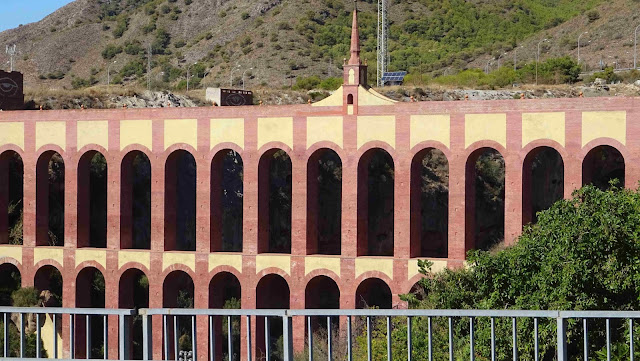
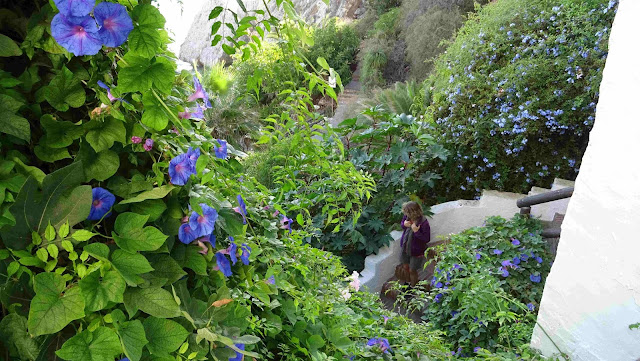


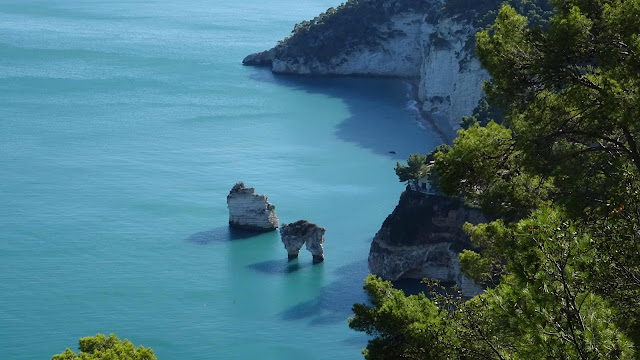
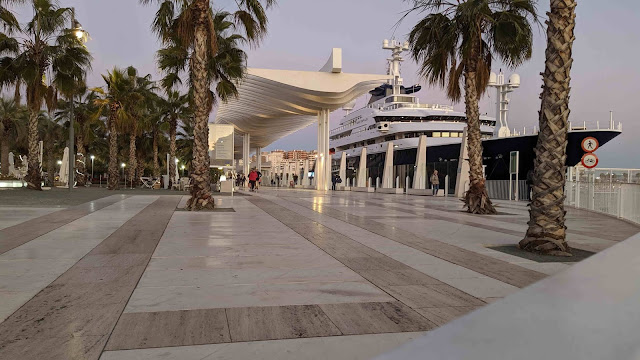



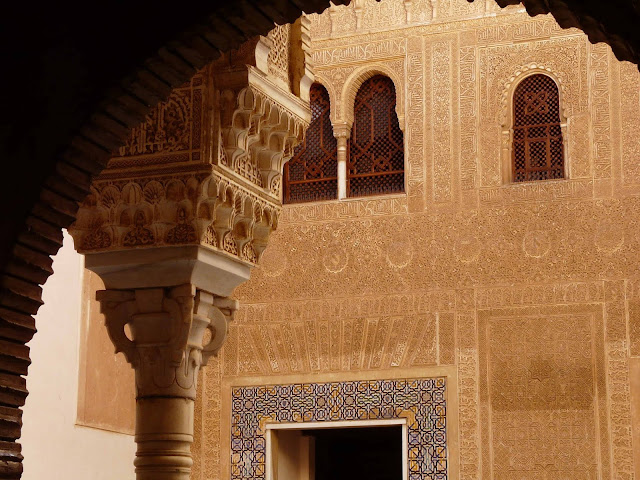
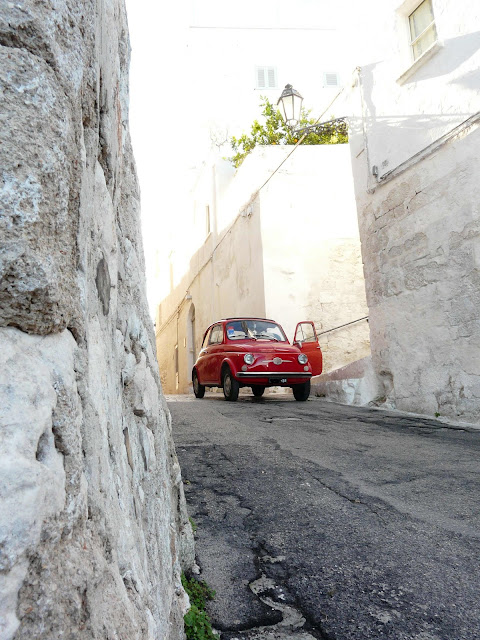
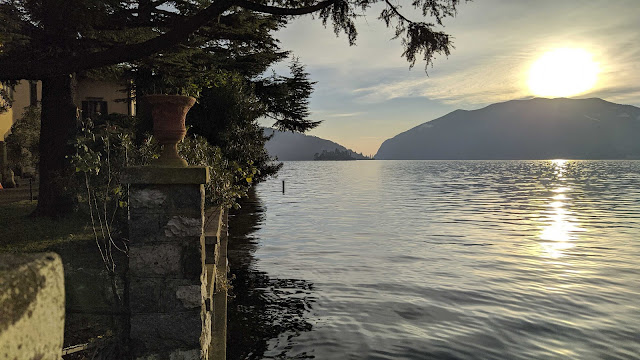

Comments
Post a Comment